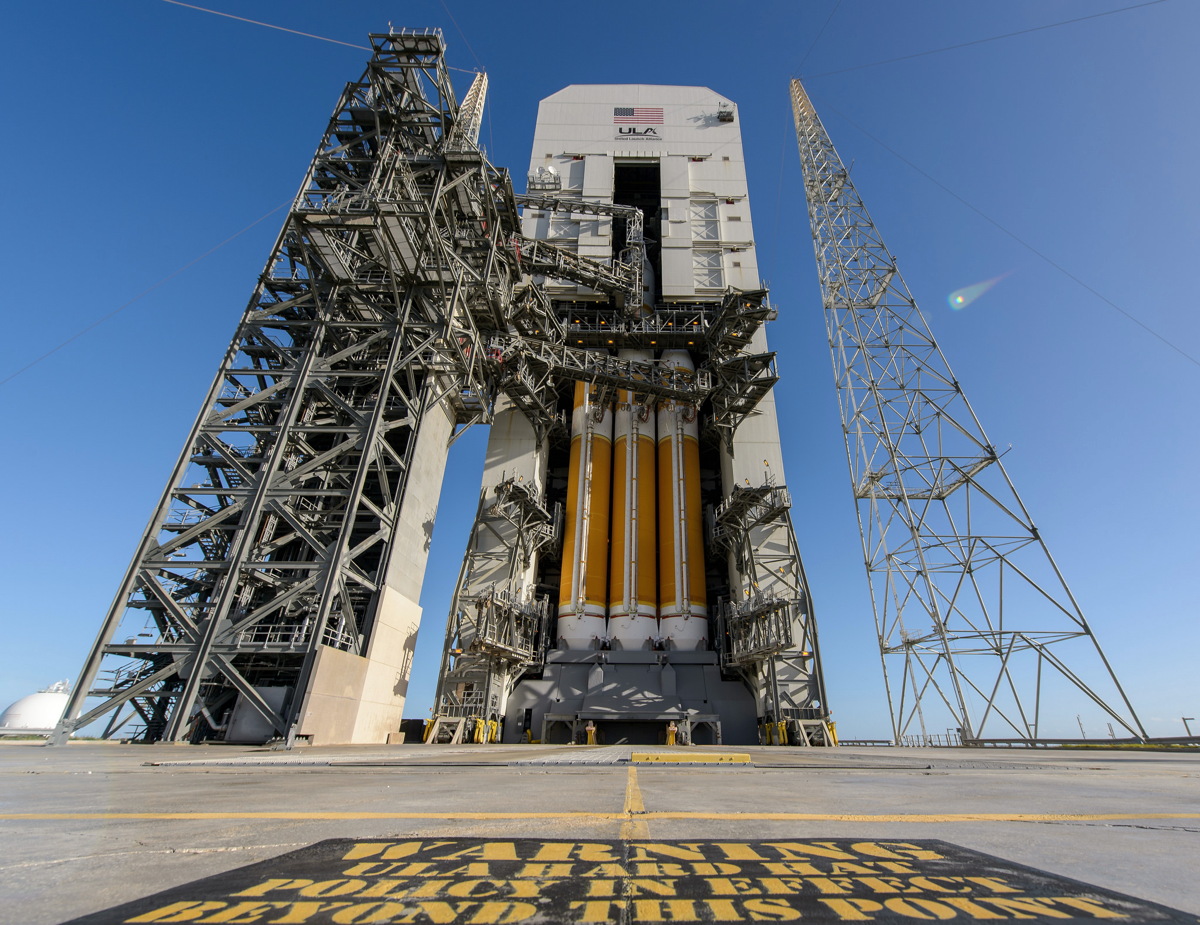NASA to Launch First Orion Deep-Space Capsule Flight Today: Watch Live

CAPE CANAVERAL, Fla. — They call it Orion. NASA's first deep-space capsule since the Apollo era is poised to launch on its maiden voyage Thursday (Dec. 4), and you can watch the action live online.
The Orion spacecraft, a capsule destined to fly NASA astronauts on deep-space missions to asteroids and Mars, is counting down to a planned 7:04 a.m. EST (1204 GMT) liftoff Thursday from a pad here at the Cape Canaveral Air Force Station. A massive Delta 4 Heavy rocket, the most powerful booster in use today, will launch the uncrewed test flight.
You can watch the Orion launch live on Space.com, courtesy of NASA TV, beginning at 4:30 a.m. EST (0930 GMT). The mission will last 4.5 hours and will send Orion higher and faster than any manned spacecraft in the last four decades. [NASA's Orion Test Flight: Full Coverage]
"It is a test flight, and it's set up to be a risky flight," NASA Orion Program Manager Mark Geyer told reporters on Wednesday (Dec. 3). That's why this mission is unmanned, Geyer added.
The test is risky because Orion is NASA's first new manned spacecraft designed to fly astronauts beyond low-Earth orbit since the era of the Apollo moon landings. For this mission, the Delta 4 Heavy rocket — built by United Launch Alliance — will loft Orion up to an altitude of 3,600 miles (5,800 kilometers), with the spacecraft then streaking back to Earth at nearly 20,000 mph (32,000 km/h).
Then comes the real test.
During re-entry, Orion's heat shield — the largest of its kind ever built — will have to survive searing temperatures of nearly 4,000 degrees Fahrenheit (2,800 degrees Celsius). Then the capsule's massive parachutes must deploy in order to send the gumdrop-shaped spacecraft down to a successful splashdown in the Pacific Ocean about 600 miles (970 km) southwest of San Diego, California. Splashdown should occur at 11:29 a.m. EST (1629 GMT).
Get the Space.com Newsletter
Breaking space news, the latest updates on rocket launches, skywatching events and more!
Orion was built for NASA by Lockheed Martin to be the agency's new workhorse deep-space vehicle. NASA's space shuttle fleet retired in 2011, with the agency planning to use commercial space taxis to fly astronauts to and from the International Space Station beginning in 2017.
Orion, however, will be NASA's vehicle for sending astronauts to an asteroid or Mars. President Barack Obama has tasked NASA with the goal of sending astronauts to an asteroid by 2025, and then on to Mars by the mid-2030s.
"It's a new mission, and there are some things that I'm sure we're going to learn tomorrow that will enable us to fly humans into deep space," said Mike Sarafin, the flight director for Orion's test flight, which NASA calls Exploration Flight Test-1.
Sarafin will watch over the Orion test flight from NASA's Mission Control Center in Houston, where a crack team of veteran flight controllers is tracking the flight.
Even legendary Apollo program flight director Gene Kranz, who watched over the infamous Apollo 13 mission, will be in the control room for this test flight, Sarafin said. There is a sense, Sarafin added, of the "gang getting back together again."
"The team has been tested in a number of ways, and it's time to get on with flying," Sarafin said.
And if all goes well, don't expect NASA to celebrate with just handshakes and hurrahs.
"Yes, we are going to have a splashdown party," Sarafin said. "We'll just take a little moment together as a team, to have a little food and drink to celebrate."
Email Tariq Malik at tmalik@space.com or follow him @tariqjmalik and Google+. Follow us @Spacedotcom, Facebook and Google+. Original article on Space.com.
Join our Space Forums to keep talking space on the latest missions, night sky and more! And if you have a news tip, correction or comment, let us know at: community@space.com.

Tariq is the Editor-in-Chief of Space.com and joined the team in 2001, first as an intern and staff writer, and later as an editor. He covers human spaceflight, exploration and space science, as well as skywatching and entertainment. He became Space.com's Managing Editor in 2009 and Editor-in-Chief in 2019. Before joining Space.com, Tariq was a staff reporter for The Los Angeles Times covering education and city beats in La Habra, Fullerton and Huntington Beach. In October 2022, Tariq received the Harry Kolcum Award for excellence in space reporting from the National Space Club Florida Committee. He is also an Eagle Scout (yes, he has the Space Exploration merit badge) and went to Space Camp four times as a kid and a fifth time as an adult. He has journalism degrees from the University of Southern California and New York University. You can find Tariq at Space.com and as the co-host to the This Week In Space podcast with space historian Rod Pyle on the TWiT network. To see his latest project, you can follow Tariq on Twitter @tariqjmalik.









